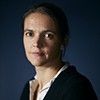On July 2nd, 10–12 EST, as part of the Networks 2021 conference, a joint Sunbelt and NetSci conference, Nature editors Mary Elizabeth Sutherland and Federico Levi hosted a round table on Computational Social Science. The event comprised five talks followed by a Q&A. The speakers invited to the event (below) have contributed to this Nature special on computational social science. A video recording of the event is available at the bottom of this page.
Speakers:
Jake Hofman, Duncan Watts, David Lazer, Claudia Wagner, Mirta Galesic, Caroline Buckee

Talks:
Integrating explanation and prediction in computational social science
Jake Hofman, Duncan Watts

Computational social science is more than just large repositories of digital data and the computational methods needed to construct and analyse them. It also represents a convergence of different fields with different ways of thinking about and doing science. The goal of this talk is to provide some clarity around how these approaches differ from one another and to propose how they might be productively integrated. Towards this end we make two contributions. The first is a schema for thinking about research activities along two dimensions—the extent to which work is explanatory, focusing on identifying and estimating causal effects, and the degree of consideration given to testing predictions of outcomes—and how these two priorities can complement, rather than compete with, one another. Our second contribution is to advocate that computational social scientists devote more attention to combining prediction and explanation, which we call integrative modelling, and to outline some practical suggestions for realizing this goal.
Meaningful measures of human society in the twenty-first century
David Lazer

Science rarely proceeds beyond what scientists can observe and measure, and sometimes what can be observed proceeds far ahead of scientific understanding. The twenty-first century offers such a moment in the study of human societies. A vastly larger share of behaviours is observed today than would have been imaginable at the close of the twentieth century. Our interpersonal communication, our movements and many of our everyday actions, are all potentially accessible for scientific research; sometimes through purposive instrumentation for scientific objectives (for example, satellite imagery), but far more often these objectives are, literally, an afterthought (for example, Twitter data streams). Here we discuss the potential of this massive instrumentation—the creation of techniques for the structured representation and quantification—of human behaviour through the lens of scientific measurement and its principles. In particular, we focus on the question of how we extract scientific meaning from data that often were not created for such purposes. These data present conceptual, computational and ethical challenges that require a rejuvenation of our scientific theories to keep up with the rapidly changing social realities and our capacities to capture them. We require, in other words, new approaches to manage, use and analyse data.
Measuring algorithmically infused societies
Claudia Wagner

It has been the historic responsibility of the social sciences to investigate human societies. Fulfilling this responsibility requires social theories, measurement models and social data. Most existing theories and measurement models in the social sciences were not developed with the deep societal reach of algorithms in mind. The emergence of ‘algorithmically infused societies’—societies the very fabric of which is co-shaped by algorithmic and human behaviour—raises three key challenges: the insufficient quality of measurements, the complex consequences of (mis)measurements, and the limits of existing social theories. Here we argue that tackling these challenges requires new social theories that account for the impact of algorithmic systems on social realities. To develop such theories, we need new methodologies for integrating data and measurements into theory construction. Given the scale at which measurements can be applied, we believe measurement models should be trustworthy, auditable and just. To achieve this, the development of measurements should be transparent and participatory, and include mechanisms to ensure measurement quality and identify possible harms. We argue that computational social scientists should rethink what aspects of algorithmically infused societies should be measured, how they should be measured, and the consequences of doing so.
Human social sensing is an untapped resource for computational social science
Mirta Galesic

The ability to ‘sense’ the social environment and thereby to understand the thoughts and actions of others allows humans to fit into their social worlds, communicate and cooperate, and learn from others’ experiences. Here we argue that, through the lens of computational social science, this ability can be used to advance research into human sociality. When strategically selected to represent a specific population of interest, human social sensors can help to describe and predict societal trends. In addition, their reports of how they experience their social worlds can help to build models of social dynamics that are constrained by the empirical reality of human social systems.
Thinking clearly about social aspects of infectious disease transmission
Caroline Buckee

Social and cultural forces shape almost every aspect of infectious disease transmission in human populations, as well as our ability to measure, understand, and respond to epidemics. For directly transmitted infections, pathogen transmission relies on human-to-human contact, with kinship, household and societal structures shaping contact patterns that in turn determine epidemic dynamics. In addition to these human contact patterns, social, economic and cultural forces also shape patterns of exposure, health-seeking behaviours, infection outcomes, the likelihood of diagnosis and reporting of cases and the uptake of interventions. Although these social aspects of infectious disease epidemiology are difficult to quantify and have limited the generalizability of modelling frameworks in a policy context, new sources of data on relevant aspects of human behaviour are increasingly available. Integrating local social contexts into the design and interpretation of model frameworks using new ‘big data’ and more traditional data streams offers the possibility of both policy-relevant models for public health decision-making, as well as the development of robust generalizable theories about human behaviour in relation to infectious disease ecology and transmission.

